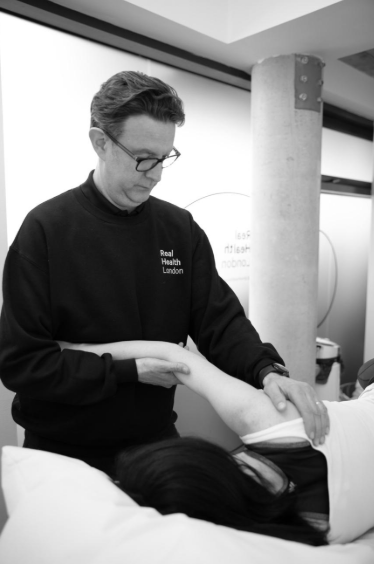What Is Osteopathy?
Osteopathy considers the whole body and how its systems are interrelated. It uses a variety of techniques to focus on the diagnosis, treatment, and prevention of various disorders. It involves using the hands to move muscles and joints to encourage the body to heal itself. For older adults, osteopathy can be particularly beneficial in addressing issues such as joint pain, stiffness, and balance problems.
Osteopathy is recognised as a safe and effective form of treatment for musculoskeletal pain, which is common among older adults.
How Can Older Adults Benefit From Osteopathy?
As we age, our bodies undergo various changes that can lead to discomfort and reduced mobility. Conditions like arthritis, osteoporosis, and muscle weakness become more prevalent, making everyday activities challenging. Osteopathy offers a non-invasive treatment option that can help alleviate these issues.
Research indicates that osteopathic treatment can help improve your balance, confidence with daily activities and reduced fall risk.
How Can Osteopathy Help?
Osteopathy provides several benefits for older adults;
- Pain Relief: Osteopathic techniques can help alleviate pain associated with conditions like arthritis and muscle tension.
- Improved Mobility: By addressing joint stiffness and muscle tightness, osteopathy can enhance movement and flexibility. Osteopathic treatment may improve the range of motion in elderly patients with osteoarthritis.
- Enhanced Balance: Techniques aimed at improving your sense of balance can help prevent falls, a common concern among older adults.
- Stress Reduction: The gentle nature of osteopathic treatments can promote relaxation and reduce stress levels, benefiting both mental and physical health.
- Blood flow: Improve blood flow which can help with tissue health/muscle and joint health, energy levels and healing.
What to Expect During an Osteopathy Session ?
During a consultation, the osteopath will:
- Assess Your Health: They will take a detailed medical history and discuss your symptoms.
- Physical Examination: The osteopath will examine your posture, movement, and areas of discomfort.
- Treatment Plan: Based on the assessment, a personalised treatment plan will be developed, which may include soft tissue techniques, stretching, gentle joint mobilisation, exercise and postural advice.
Is Osteopathy Safe for older adults?
Yes, osteopathy is both safe and beneficial for older adults. Osteopaths are trained to modify techniques to suit the individual’s needs, ensuring treatments are gentle and appropriate for age and health status.
What Conditions Does Osteopathy Help With?
Osteopathy can assist in managing several age-related conditions:
- Arthritis: Alleviating joint pain and improving movement, especially for those with osteoarthritis or rheumatoid arthritis.
- Osteoporosis: Helping to maintain bone strength and prevent fractures, especially by promoting exercise and better balance.
- Back and Neck Pain: Addressing musculoskeletal discomfort.
- Balance Disorders: Enhancing stability and reducing the risk of falls.
- Chronic Pain: Managing long-term pain conditions allowing for improved function and less discomfort.
How to add Osteopathy to Your Healthcare
Making osteopathy part of your healthcare routine can complement other treatments and therapies such as physiotherapy, massage, personal training and nutrition.
About the Author
Daniel Cohen is an experienced osteopath with over 20 years in practice. He combines hands-on treatment with exercise, nutrition, and postural advice to help patients take charge of their recovery. A keen tennis player and former lecturer in osteopathic technique, Daniel brings both expertise and a personal passion for movement to his work.
